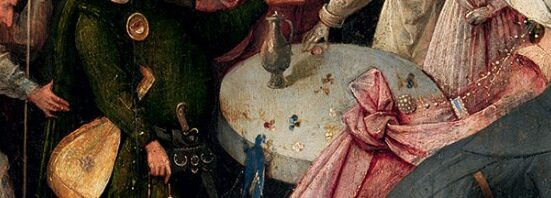Walt Disney landed in France just days after the first world war ended. The 16-year-old was working as a driver for the Red Cross and spent nine months touring the country, stationed in outposts including the outskirts of Versailles and the Hôtel Régina (opposite the Louvre). When he was not shuttling military officials around or running errands, the young Disney was soaking up France’s visual culture and aesthetics. This nine-month period he spent in France, followed by numerous European sojourns throughout his life, would go on to influence his blockbuster films and, with them, childhoods around the world.
“Inspiring Walt Disney: The Animation of French Decorative Arts”, a new exhibition at the Metropolitan Museum of Art in New York, takes a closer look at these cultural links. The show brings together production artworks and memorabilia from four Disney films with 60 rococo objects, exploring how both 20th-century cartoonists and 18th-century artisans employed similar techniques to animate the inanimate. The craftsmen of rococo objects used curves and undulations to breathe life into their objects. The exhibition includes treasures from the Sèvres porcelain manufactory which produced exquisite pieces. A pair of elephant vases produced in 1757 and 1758 by Jean-Claude Duplessis, a master of porcelain, embodies the style: the trunks were designed to hold candle sockets, and the pieces seem as if they may burst into life at any moment. The personification of animals became a recurring theme in Disney animation, from the clumsy hero of “Dumbo” (1941) to the evil vultures in “Snow White and the Seven Dwarfs” (1937), shown in a striking painting by the studio’s artists.
The exhibition focuses on “Snow White”, the first feature-length Disney film, and three other stories: “Cinderella” (1950), “Sleeping Beauty” (1959) and “Beauty and the Beast” (1991, pictured). Though there are clear variations in aesthetic between the films due to their different creative teams, each movie looked to Europe for ideas. In 1935, after one trip to the continent, Disney shipped 335 finely illustrated books to America and these volumes of art, architecture, fairy-tales and fables became critical resources for his employees. Over the years he also became something of a collector of tiny porcelain objects and furniture, and often designed items himself. Disney’s interest in the whimsical, combined with the library he assembled, would influence generations of animators at the company.
“Cinderella” drew heavily on the opulent palaces and gilded ballrooms of 18th- and 19th-century France. Mary Blair, a pioneering animator who had joined the studio in 1940, was largely responsible for its look. The extraordinary drawings for the heroine’s twirling transformation scene—24 of them for one second of animation—are a particular highlight of the exhibition. “Sleeping Beauty”, by contrast, had a more muted palette and Germanic feel. Much of it is set outdoors, and Eyvind Earle, the film’s artistic director, drew inspiration from the Unicorn Tapestries, woven in Flanders in 1500, which are also on display.
But it is “Beauty and the Beast”, with its dancing clocks and sumptuously decorated palace, which makes the connections clearest. Disney himself had sought to adapt the tale in the 1930s and 1950s but died in 1966 before he could bring the project to fruition. It took a crisis at the studio, heralded by the box-office disaster that was “The Black Cauldron” in 1985, to revive interest in “Beauty and the Beast”. Disney bosses decided to return to the hand-drawn artistry of the company’s early animators, and a classic fairy-tale set in 18th-century France seemed a perfect fit.
The creative team was led by Brian McEntee, with input from animators including Jean Gillmore, Glen Keane and Mel Shaw, a Disney veteran who had started his career working on “Fantasia” (1940). The film’s famous talking objects closely mirrored the animation of rococo ornaments: in the Met, original sketches for the character of Lumiere, a suave French candlestick, sit next to ornate twisted candlesticks designed by Juste-Aurèle Meissonnier. Mrs Potts, the beloved teapot voiced by Dame Angela Lansbury, took inspiration from 18th-century jugs and pots, which often had an element of tongue-in-cheek personification—the Meissen manufactory, founded in Germany in 1710, designed lids and spouts to evoke animals and people. Original sketches for the Beast’s palace were inspired by Charles Le Brun’s designs for the Palace of Versailles, and the sparkling ballroom scene, where the Beast has his first dance with Belle, nodded to the Hall of Mirrors.
Today it is considered an all-American juggernaut, yet Disney owes a huge aesthetic debt to Europe, from the stories which inspired the films to the design and artistic direction and, of course, the fairy-tale castles at the company’s theme parks. The humour and imagination of rococo artists and artisans had—and continue to have—a particularly powerful influence over the studio’s style: Jean Honoré Fragonard’s “The Swing”, a masterpiece painted in 1767, made a cameo in “Frozen” (2013). The technological prowess of early Disney animators was matched by their artistry, in much the same way as the potters of Sèvres fashioned delicate porcelain into items seemingly paused mid-movement. When, in 1938, Disney gave the Met a gouache on celluloid from “Snow White”, the New York Times Magazine posed the question: “It’s Disney, but is it art?” This exhibition convincingly answers that question in the affirmative. ■
“Inspiring Walt Disney: The Animation of French Decorative Arts” continues at the Metropolitan Museum of Art in New York until March 6th







